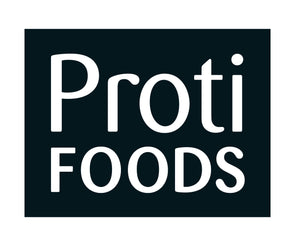How To Speed Up Metabolism To Accelerate Weight Loss
We all want a quicker metabolism rate, right? Faster metabolism means more calories burnt and rapid weight loss. Whether it is your body composition, genes, diet, eating schedule or activity level, here is a metabolism-enhancing checklist to boost your metabolism and get you burning more calories than ever before. But before we get started, the three most common mistakes that dieters make that actually slow metabolism include:
- Not staying hydrated
- Not including healthy fats on their diet
- Not eating enough
Now, let’s explore how we can boost our metabolism to lose weight faster.
Focus on proteins
Some foods are harder to digest than others. Fortunately, hard to digest foods significantly increase the rate of metabolism, known as your metabolic rate, through a process commonly referred to as the thermic effect. Thermic effect is the caloric cost of processing and digesting different macronutrients, i.e., carbohydrates, fats and proteins, in your diet.
Because the body burns more calories processing proteins than it does when processing carbohydrates and fats, replacing some of the carbs in your diet with protein-rich foods has the effect of boosting metabolism. Lean steak, turkey or chicken breast, eggs, fish, low-fat soy products, nuts, non-fat dairy to name but a few, are recommended for boosting your daily protein intake.
Eating breakfast is a must

Breakfast is the most critical meal of the day. For long-term weight loss and weight maintenance, start your day with a healthy meal. Try a veggie omelet, protein-rich Greek yogurt, fiber-rich oatmeal, or any other meal which is loaded with lean proteins and healthy fats.
Sip some caffeine
Taken in moderation, drinks such as coffee, unsweetened iced-tea and hot tea have the effect of raising your metabolic rate, though just in the short term. The caffeine in these drinks actually helps the user to feel less tired and even increases his or her endurance while exercising. However, it is recommended that users enjoy caffeinated treats that do not include too many extra calories from added sugars, fats, and the likes. It is also advisable to ensure that the overall caffeine intake does not interfere with getting sufficient sleep each night.
Increase your exercise intervals
Compare the calories it takes to do intervals in cardiovascular exercises to managing stop and go undertakings in a traffic jam. Normally, it takes more gas to stop and start your vehicle than it does to cruise along the highway. Whether you are swimming, walking, running or cycling, workout intervals, often called high-intensity interval training (HIIT), can help you burn more calories over the same duration of time. The same principle applies to utilizing elliptical or rowing machines at a gym.
By adding intervals, you are also increasing your excess post-exercise oxygen consumption. Your body takes hours to recover from an intense exercise routine and to return to its previous resting metabolic status. Simply put, even after finishing your exercises, your metabolism remains elevated and working extra hard for you.
Try strength training
By doing some strength training routines, for instance pumping iron, just a couple of times a week, it is possible to reverse around 50% of the seemingly slow metabolism that comes with age. Regretfully, after 40 years of age, metabolism rates start to decline little by little. To increase it to better levels, try a 15-minute workout in the morning prior to getting ready for work, or in the evening before relaxing in front of your TV.
